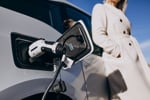In March 2019 the Tesla Model 3 – the mid-sized all-electric saloon, with over 250 miles of range, and available from under £400 per month – outsold all alternatives across Europe.
Most notably, Tesla took more orders than the BMW 3 Series, Mercedes C-Class and Audi A4 combined. The throne held for decades by the German trio has well and truly been overthrown.
With public consensus seemingly behind electric vehicles, how do the other three pillars of the Future of Mobility compare?
The first pillar in the Future of Mobility is for vehicles to be connected. In the early 2010’s, consumer insurance companies joined what fleet operators had previously done and began issuing ‘black boxes’ to high-risk drivers, or those wishing to lower their premiums. The data collected since has had fairly limited use – informing underwriters of any cars who are speeding, driving at unsociable hours or exceeding the annual mileage limit.
In the Future of Mobility, the data collected by vehicles will increase, but who owns that data and its potential value are yet to be seen.
For example, insurance companies could develop dynamic packages which cover drivers just when they’re in the vehicle (which by an RAC calculation is as low as 4% of the time), the data collected could also be used to understand extreme weather conditions and alert other vehicles to road issues.
In the most Orwellian example, data about the passengers and journeys will be collected (by manufacturers or fleet operators) and sold to marketers looking to increase their customer profiles. The price tag attached to this data could then be used to reduce the cost of vehicle usage.
With vehicles offering a variety of entry-level autonomy already, from cruise control, lane detection, and parallel parking, these features will continue to develop and provide a safer environment for those inside and outside the car.
However, greater autonomy involves greater safety concerns. In terms of the true future of mobility, it’s feasible to suggest that those who are currently immobile – the young, old and disabled - will have access to vehicles which are capable of full autonomy.
This concept also raises questions whether passengers should hold driving licenses, whether there is legal minimum age to ride, or if all occupants can be intoxicated.
When vehicles are able to achieve full autonomy, it’s likely the percentage of the population who are able to access vehicles will increase and it would be an easy assumption that this could mean more vehicles making their way on to our roads, but changes to ownership models will counteract the increased demand.
Traditional ownership models, whereby the customers pay cash, takes out a finance agreement or leases the vehicle for several years, has been the primary method for purchasing a car for 100 years.
86% of new cars in the UK are bought with a finance package, with PCP being the most popular choice.
The Future of Mobility offers an alternative structure, where large fleet operators and mobility startups will rent vehicles on a pay-as-you-go basis negating the need for individual insurance or additional running costs.
With access to a vehicle which suits your immediate needs the demand for serviced-based transport will be strong from the outset but this requires the largest infrastructure and financing investment to work effectively. In the medium term, online providers are offering solutions to rent out vehicles during down-times – i.e. when the owner is on holiday, or the car is parked outside the office for eight hours.
Tesla’s ascent to executive travel glory started in 2008 with the introduction of the Roadster, which was the first all-electric car to travel more than 200 miles. Around 2,500 Roadsters were delivered in the four years of production, but this pales in comparison to the Model S which surpassed 250,000 global sales last September.
The current line-up of all-electric vehicles, including the Nissan Leaf and BMW i3, have had a successful but humble start.
Questions have been raised about whether the infrastructure is there to support the transition, but do these recent findings conclude the only concern is the vehicle price?
Author: Shaun Armstrong, managing director at Creditplus
















Login to comment
Comments
No comments have been made yet.